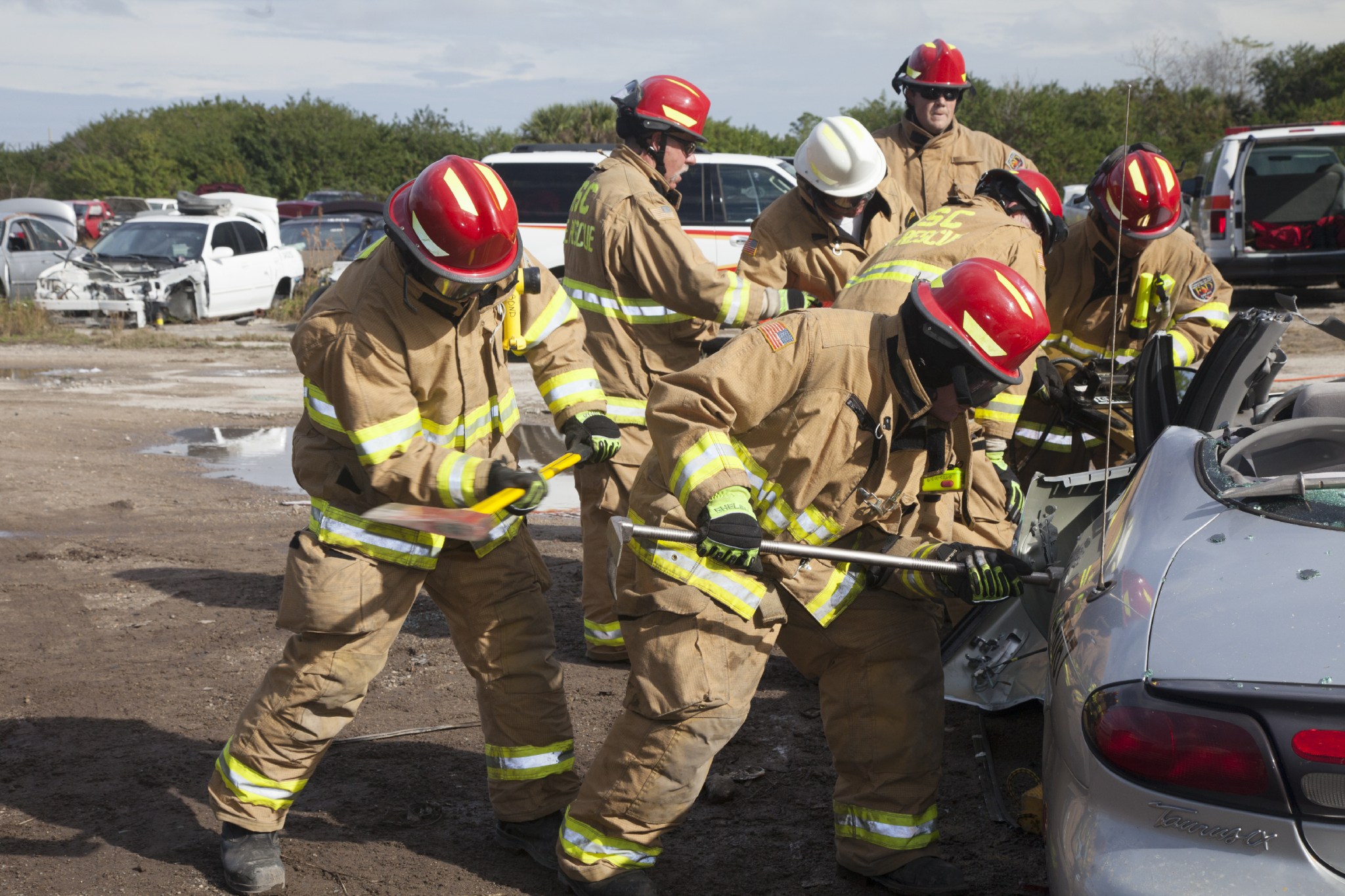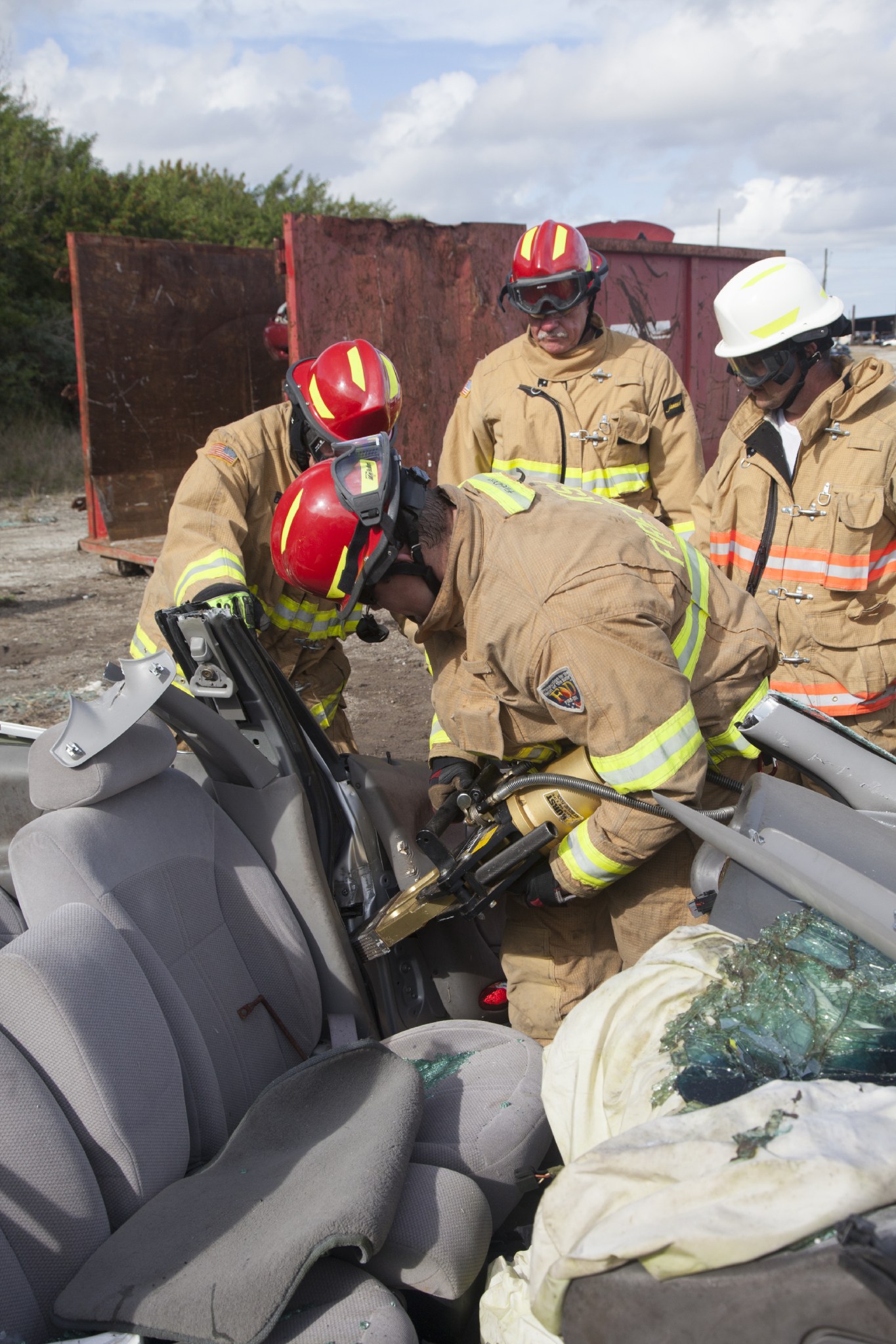Kennedy Space Center’s Protective Services Office considers the safety of each employee and visitor on the center a top priority every day. To ensure that safety, Kennedy’s Special Rescue Operations firefighters conducted training using the Jaws of Life and other advanced rescue tools at a facility nearby.
Recently, Kennedy’s firefighters achieved Pro Board Certification in aerial fire truck operations. Now, with the completion of the Jaws of Life training, the Protective Services Office is one step closer to achieving certification in vehicle machinery extrication.

“One of the missions of the Protective Services Office is to oversee fire rescue services,” said Tim Moore, Fire Rescue Emergency Management specialist in the protective services office. “Our main goal is life. Our second goal is mission. Our third goal is the property itself.”
“The type of training we completed was vehicle and machinery extrication,” said Dave Seymour, battalion chief. “We practiced extrication skills using a vehicle that had been damaged in an accident.”
During the training, firefighters wearing full gear used very simple tools such as axes, to highly specialized tools to clear away windows. They also used a hydraulic cutting tool, capable of up to 50,000 pounds of force, to remove the roof of the vehicle. Then they practiced using the Jaws of Life on the vehicle in order to simulate the rescue of a trapped and injured person.
Seymour said that in response to a motor vehicle accident on the center, a fire engine would be dispatched with basic life-saving tools. If, after an assessment of the scene, it is determined that the rescue is more complicated, then a squad truck would be dispatched that carries more advanced rescue tools.

“The type of equipment that we have available to us on the squad truck can range from a very simple center punch for clearing windows, all the way up to the Jaws of Life, which is a hydraulic tool that has up to 100,000 pounds of spreading force,” Seymour said.
Michael Hayes, the assistant chief of Safety and coordinator for the Special Rescue Operations Team, said there are several types of rescue scenarios.
“The special rescue team is a diverse group of individuals that are trained at a higher level than the standard firefighters,” Hayes said. “We train to provide rope rescue, which would be an elevated rescue from the side of a building or tower; confined space rescue, which would be rescuing somebody from a manhole or vault; and vehicle extrication using the Jaws of Life.”
Hayes said for vehicle extrication, the firefighters have to complete a 40-hour operational class, which is compliant with the National Fire Protection Association. Then they will advance to the technician level 2, which is an additional 40 hours of training.
“The Kennedy Space Center Fire Rescue Services is second to none,” Moore said. “We require all of our firefighters to be certified in each discipline they perform in.”


























